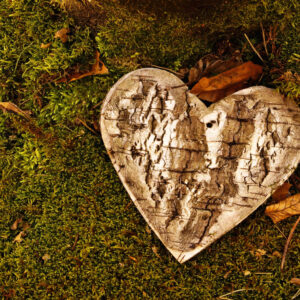The Greening of Human Burials: What You Need to Know
April 25, 2023 | Advance Care Planning

Californians follow lots of green practices in their daily lives. And many of them are extending those priorities to funeral planning. Although “green” burials can be a difficult and personal topic, understanding how they work can help with decision making and planning.
Green burials defined
Green burial options (also termed body or human composting, natural organic reduction, and terramation) are a growing trend in the funeral industry that seek to minimize the environmental impact of traditional burial practices. A recent survey from the National Funeral Directors Association found that 60.5% of people would be interested in exploring “green” funeral options. These eco-friendly burials prioritize sustainability and aim to reduce the carbon footprint of the funeral industry.
One of the most significant aspects of green burials is that they do not use embalming fluids. Embalming fluids are toxic chemicals that preserve and slow the decomposition process; these fluids can contaminate soil and groundwater. With green burials, the body is prepared using natural methods, such as refrigeration or dry ice, and enclosed in biodegradable materials, like a simple cotton shroud or a coffin made from bamboo, wicker (pictured), or cardboard. The use of natural materials ensures that the body will decompose naturally and return to the earth without leaving behind any harmful substances.
Green burials also avoid the use of concrete burial vaults. Concrete vaults are often used to prevent the ground from sinking and to protect the casket. But they can take hundreds of years to decompose. In a green burial, the body is buried directly in the earth, which allows for natural decomposition, creating a sustainable and environmentally friendly final resting place.

Green burials often lead to other sustainable practices, such as planting native trees or wildflowers at the gravesite instead of traditional headstones. This not only provides a more natural and beautiful setting for the gravesite, but also helps support local ecosystems and biodiversity.
In September 2022, Governor Gavin Newsom signed a bill to allow human composting in California starting in 2027. In this process, the body is placed in a box with biodegradable materials to help the body naturally decompose. The soil produced is shared with family members who may use it with their plants or spread it in their garden of choice.
“This new law will provide California’s 39 million residents with a meaningful funeral option that offers significant savings in carbon emissions, water and land usage over conventional burial or cremation,” Katrina Spade, chief executive officer of Recompose, a Seattle funeral home, told the Los Angeles Times.
Also legalized in California in 2017 is a cremation chemical process called alkaline hydrolysis (aka water cremation). It uses less energy to reduce a body to components of liquid and bone than traditional cremation and does not release toxins into the atmosphere.
Read here for specifics on burial and cremation laws in California.
Cost and availability
In addition to being more environmentally friendly, green burials can be less expensive because they use natural materials and don’t require caskets and burial vaults. In California, green burials cost between $4,000 to $10,000 and water cremation costs range from $1,500 to $3,500. A traditional burial in a cemetery can cost up to $11,000. Consult this Green Burial Directory to find a green burial cemetery in your area.
For consumers, the most pressing need is education and options for climate-friendly after-death care. Green burials prioritize natural materials and provide a respectful and meaningful final resting place while avoiding toxic chemicals and environmentally harmful practices. Throughout human history, the eco-friendly approach has been the norm, so in a sense we are returning to the practice of placing a body carefully wrapped into the ground with minimal intervention.

